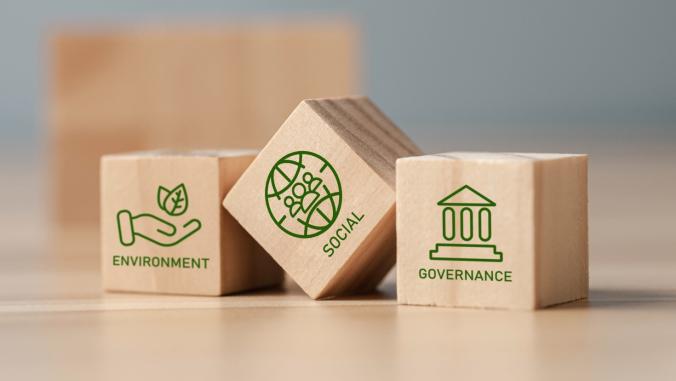An experiment in ‘net zero deforestation’ in Guatemala
In a country experiencing one of the most rapid deforestation rates in the world, an experiment in sustainable, community-managed timber production lends some hope to the possibility of net zero deforestation harvesting.

Watching the sun rise over the temple-riddled rainforest of Guatemala’s Tikal National Park, it’s easy to understand why George Lucas chose it as the site for filming the jungle moon of Yavin 4 in “Star Wars: Episode IV.” Brightly colored birds fly close to the canopy, strange insects buzz about and howler monkeys live up to their namesake.
Trees dominate the horizon, including the mighty Kapok — the sacred tree of the Maya — which towers at more than 200 feet above the forest floor.
But the otherworldly landscape is under threat by a very earth-bound problem: deforestation. Guatemala is experiencing one of the most rapid deforestation rates of any country, according to a 2010 report by the U.N. Food and Agriculture Organization (FAO).
Across Guatemala’s Petén region, which stretches across the northern half of the country to the border with Mexico and Belize, agriculture is the primary driver of deforestation. Increasing international demand for sugar, palm oil and beef, as well as subsistence communities being pushed off their traditional land, are swiftly destroying the Maya Forest — the second-largest remaining tropical rainforest in the Americas.
In 2014, deforestation finally appeared to become a priority for businesses, with everyone seeming to want to jump on the tree-hugging bandwagon. “Zero deforestation” became a buzzword for a newfound corporate commitment to eliminating the systematic destruction of forests from global supply chains.
In September, more than 30 companies — including Asia Pulp and Paper, Cargill and Unilever — joined hundreds of governments, businesses, NGOs and indigenous peoples' groups to sign the New York Declaration on Forests, which aims to halve deforestation by 2020 and end it altogether by 2030.
With deforestation driving 17 percent of global carbon dioxide emissions, according to the U.S. Environmental Protection Agency, halting it would be a major blow to global warming.
Encouraging as this may be, businesses would do well to take a step back and recognize a cold, hard truth: There’s no such thing as “zero deforestation.”
That’s because for as long as the world demands forest products, it will involve cutting trees. The question is not whether deforestation will occur, but if it will be done in a sustainable way — it is possible to achieve “net-zero deforestation” if products are sourced from producers who harvest forests in a responsible way.
And this also makes business sense — nearly 90 percent of companies already see opportunities in shifting to sustainably sourcing key commodities in ways that safeguard forests, said CDP.
Many companies might want to walk their anti-deforestation talk, but don’t know how. A look at Guatemala could show them the way.
Sustainable forestry in Guatemala
Guatemala has had a long and tumultuous history of corporate interests trumping community claims to land, which has resulted in a horrifying track record for human rights and environmental stewardship. But times could be changing, thanks in large part to demand for sustainable forest products.
Tikal National Park is only one of eight core protected areas, a buffer zone and “multiple use” zones making up the more than 5 million acre Maya Biosphere Reserve (MBR) in Petén, established by the Guatemalan government in 1990 to safeguard the region’s biological and cultural diversity. Harvesting trees and other resources is illegal in the protected areas, but certain regulated economic activities are allowed in the buffer zone and “multiple use” zones.
An organization called the Association of Forestry Communities in the Petén (Spanish) (ACOFOP) initially lobbied the Guatemalan government to give the forest “concessions” — special permissions to extract forest resources — to the communities rather than private companies.
It was not an easy fight, said Marcedonio Cortave, ACOFOP’s founder and director. Many doubted the communities’ ability to sustainably manage the forests, and preferred to give harvesting rights to private companies, which were thought to be more capable of managing forests and providing jobs.
After convincing the Guatemalan government to grant concessions to the communities instead, ACOFOP started virtually from scratch training communities to develop the organizational and business skills necessary for success.
To help identify international markets for forest products and ensure world-class sustainable forestry standards, ACOFOP partnered with the Rainforest Alliance to certify the concessions’ forestry operations to Forest Stewardship Council (FSC) standards by the Rainforest Alliance's SmartWood Program.
The case of Carmelita
Carmelita is a community of nearly 300 people more than three hours from Petén’s capital of Flores, accessible only by a shoddy dirt road. Thanks to a concession ACOFOP helped them secure, the people of Carmelita make their living harvesting wood and non-timber forest products such as xate (commonly used in floral arrangements), chicle (used in gum) and pimienta (used in lotion).
Timber extraction provides around 70 percent of the community’s revenue, mostly from valuable mahogany trees, which can sell for as much as $3,300 per tree. To avoid unsold timber, the community only cuts trees based on purchase order, and they cut a maximum of two trees per hectare (2.47 acres) to allow the forest to regenerate. FSC certification means they maintain a strict chain of custody that guarantees all lumber can be tracked to the source. Even the operation staging areas are cleared in such a way that they will be completely reclaimed by the forest within five years.
Although high-demand products such as mahogany are relatively easy to sell on the international markets, other forest products can prove more difficult.
The people of Carmelita initially resisted the idea of harvesting xate, as it didn’t fetch a good price on international markets. Mexican farmers cultivate 95 percent of xate sold internationally, and Guatemalan xate long has been viewed as subpar. That is because xate harvesters in Guatemala would cut everything, focusing on quantity rather than quality.
However, this is starting to change thanks to sustainable forestry practices. Now, harvesters only cut healthy plants and leave the unusable ones in the forest, which allow the xate population to regenerate. Rainforest Alliance, for example, was able to convince a buyer in Texas to give the Guatemalan communities a trial run in supplying the sustainable xate, which has led to increasingly larger orders.
Buyers are learning that sustainability means quality, and a steady and reliable supply. This in turns creates the economic incentive for a community to continue embracing sustainable forestry management.
“The communities are claiming traditional rights and want to have ownership over the natural resources and the land,” said José Román Carrera, regional manager for the Rainforest Alliance TREES Program in Central America. “If we really want to make a change in the communities, we have to work at improving their business capacities.”
And the community-management model is working — the average annual deforestation rate in FSC-certified forest concessions between 2002 and 2007 was 20 times lower than the deforestation rate within the protected areas where harvesting of wood and non-timber forest products is prohibited, according to a Rainforest Alliance study (PDF).
The key to sustainable forest management in Guatemala is empowering communities to manage their own economic destinies by responsibly harvesting forest products and selling them on domestic and international markets. Local communities often are able to combine traditional knowledge with new technology to manage forests better than any company could.
In a country plagued by widespread and severe poverty — around 75 percent of Guatemalans live below the poverty line, according to the World Bank — involving communities in sustainable forest management also can provide a much-needed source of jobs for men and particularly women. This, in turn, can help reduce deforestation caused by subsistence agriculture.
For many companies around the world, the road to net-zero deforestation will be about as difficult as the one from Flores to Carmelita. But by engaging local people to help protect the planet (and their supply chains), everyone profits.
Travel and accommodations for this reporting were provided by Rainforest Alliance.





